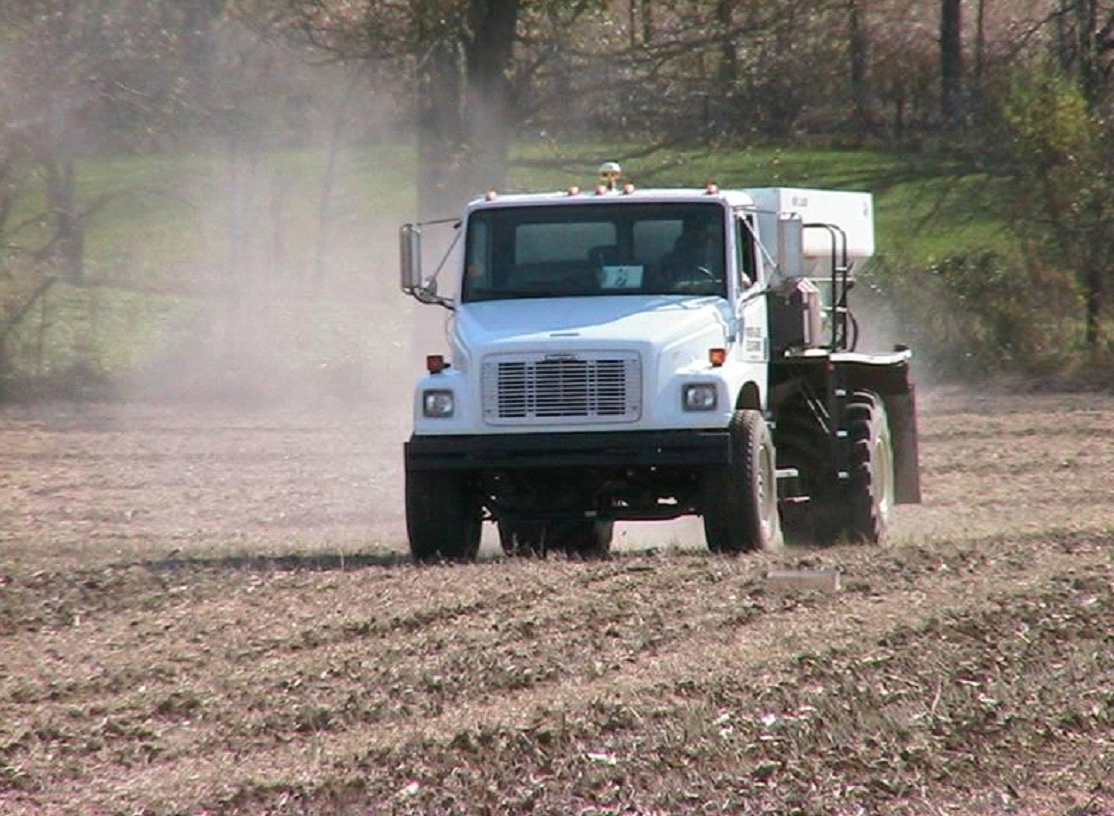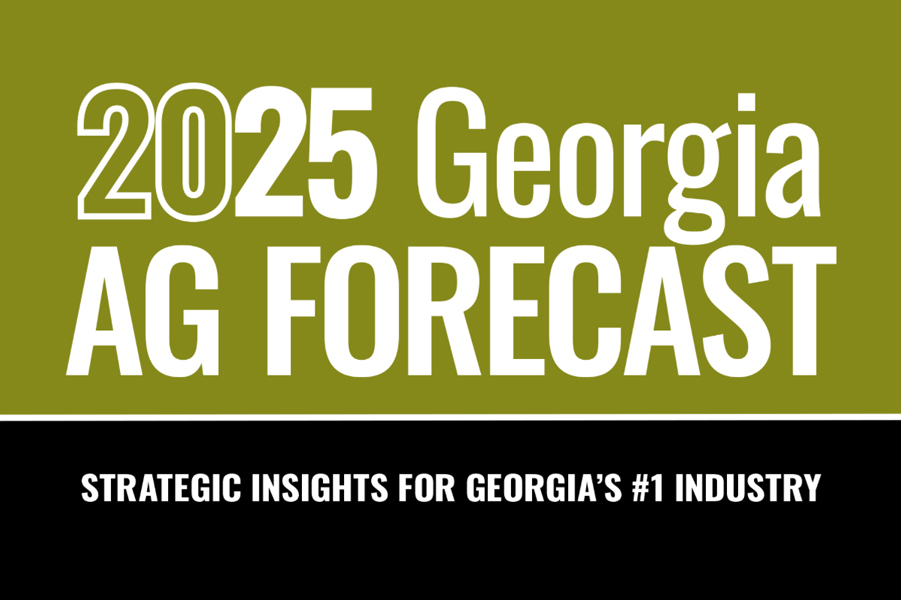Forestry
-

This publication describes forest farming (also known as forest gardening), which can be defined as cultivation of plants under a forest canopy. It includes suggestions for appropriate plants for cultivation in the Southeast.
Holly Campbell
|
-

Lime mud is a by-product produced in pulp mills as part of the process that turns wood chips into pulp for paper. The pulp mill cooks wood chips with sodium hydroxide to extract the wood fiber used to make paper from the lignin that binds the wood together. During this process, sodium hydroxide is converted to sodium carbonate. The pulp mill than adds calcium oxide, also known as quicklime, to convert the sodium carbonate back to sodium hydroxide in order to use it again. In the process, calcium carbonate is formed.
Jason Lessl
|
-

David Coyle and Mark Megalos, Southern Regional Extension Forestry
Healthy forests provide many public benefits like clean air and water, wildlife and plant habitat, and diverse forest products that help the economy and ecosystem. Healthy forests also provide individuals with a greater opportunity to achieve their personal objectives such as the production of wood products, recreational or hunting experiences, aesthetic enjoyment, or a variety of other goals. Healthy forests are sustainable and meet owner objectives. Additionally, non-timber benefits are evident in a healthy forest; when trees are healthy, they produce nuts, cones, seeds, canopy, and leaf litter that provide food and habitat for understory plants and wildlife and enrich the soil. We define forest health as the ability of a forest to maintain and perpetuate a constant high quality supply of environmental benefits, products, and a diverse plant and animal community.
Leslie Boby
|
-

SB 28-18
Forestry and Christmas Trees
Commercial insect and weed control in forestry and Christmas trees. Updated annually.
Jean Williams-Woodward, William G. Hudson, Ernest David Dickens, Mark Czarnota, Elizabeth McCarty, Allison Faye Johnson, and David C. Clabo
|
-

AP 130-3-13
Timber Situation and 2025 Outlook
1. Demand for softwood lumber and structural panels is expected to remain under pressure as single-family housing starts face challenges, including elevated mortgage rates, high house prices, and rising construction costs.
2. In southern Georgia counties impacted by Hurricane Helene, pulpwood prices are expected to stay low through most of 2025 as mills continue to process salvaged timber.
3. Affected areas may experience rising pine sawtimber prices in 2025 because of an inventory shortage.Yanshi Li
|
-

AP 133-1
Hurricane Helene Impact Report
We estimate that Hurricane Helene’s damages to Georgia agriculture and forestry will cost the state economy at least $5.5 billion in 2024 present value. This figure represents the sum of direct crop losses, losses to firms that support agriculture and forestry, losses to workers in those and related industries, and the recovery and restoration costs that firms in these industries will face. The Georgia Forestry Commission is a collaborator with UGA on this publication.
Timothy Coolong, J.Michael Moore, Jake Price, Lenny Wells, Casey W. Ritz, Wade B. Parker, Jillian Bohlen, Lawton Stewart, Greg Colson, Walter Scott Monfort, Todd Applegate, Mary Sutton, Michael Adjemian, Camp Hand, Ted McAvoy, Zilfina Rubio Ames, and Ping Yu
|
-

This 220-page Extension publication was written with landowners in mind. Whether you started burning with your grandparents as a toddler, or you’ve never held a drip torch, the Guidebook for Prescribed Burning will help you set and meet your burning goals. Written by a team of Forestry Extension professionals from across the South and reviewed by nearly 50 prescribed burning experts, Extension personnel, state forestry agency personnel, and fire scientists, this extensive full-color book (printed copies will be available in the UGA Extension store) presents fire concepts in an easy-to-read manner. The many diagrams and pictures found throughout the book illustrate and simplify fire concepts from wind direction to atmospheric conditions, firing techniques, and more. This guidebook will take you step-by-step through the processes involved in planning, preparing for, and conducting a prescribed burn on your land. The Guidebook’s four action chapters (Getting Started, Planning, Conducting, and Evaluating) start with checklists full of action items followed by detailed information on each item. In the Guidebook’s four informational chapters, you can take a deeper dive into key prescribed burning concepts including weather, smoke management, fuel, and fire behavior. This guidebook is a great new tool in any landowner’s prescribed burning arsenal. Collaborators include NC State University and Auburn University.
Leslie Boby and David C. Clabo
|
-

AP 130-2-13
Timber Situation and 2024 Outlook
1. Demand for softwood lumber and structural panels is expected to improve as interest rates drop and single-family housing starts resume their long-term trajectory.
2. Increased softwood lumber mill capacity across the South adds upward pressure on pine sawtimber prices; however, the region’s oversupply of sawtimber trees on the stump is expected to exert strong downward pressure on prices.
3. Pulpwood prices are expected to decline (at a slower pace) and stabilize in the second half of 2024.
Forecast by Yanshu Li, UGA, Associate Professor and Forest, Economics, and Taxation Specialist; Joe Parsons, UGA, Director of the Harley Langdale, Jr. Center for Forest Business; Amanda Lang and Pat Jolley, Forisk ConsultingBen Campbell and Yanshi Li
|
-

AP 130-1-11
Timber Situation and 2023 Outlook
1. Inflation remains a persistent
challenge.
2. Housing activity is beginning
to moderate.
3. U.S. South softwood lumber
market share is increasing
along with production
capacity. Plentiful
timber supplies and capital
expenditures are positives. Authors of this section are Tyler Reeves and Amanda Lang, Forisk Consulting; and
Joe Parsons and Yanshu Li, Harley Langdale Jr. Center for Forest Business,
Warnell School of Forestry and Natural Resources, University of GeorgiaAmanda R Smith and Yanshi Li
|